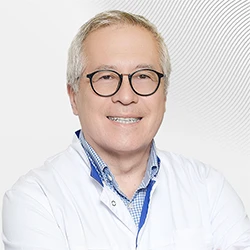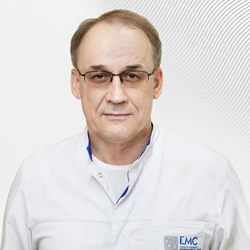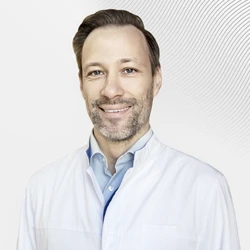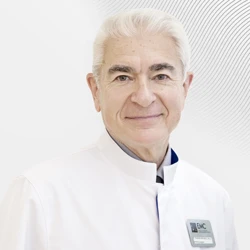Hypomastia
Diverticulum of the esophagus is a rare pathology that is diagnosed in only 1-3% of patients. In many cases, this benign formation does not cause inconvenience, goes unnoticed or is detected by chance. But sometimes pathology significantly reduces the quality of life. At the EMC Clinic, highly qualified doctors perform conservative and surgical treatment of esophageal diverticula according to modern international protocols.
Diverticulum of the esophagus: general information
The esophagus is a tube that connects the pharynx and stomach. The wall of the esophagus consists of several layers: the mucous membrane, the submucosa, the muscular and the adventitious membrane. When a lump of food enters the esophagus, it moves evenly to the stomach. This is facilitated by peristalsis — uniform contractions of the muscle layer along the entire length of the organ. The muscles of the esophagus work in coordination with the circular muscles— the upper and lower sphincter, which must relax in time to easily push a lump of food from the pharynx into the esophagus and from the esophagus into the stomach.
In some cases, this system is uncoordinated, resulting in increased pressure in the esophagus. The muscular wall of the esophagus may have an uneven structure due to congenital features or acquired disorders. In weak points under pressure, a bulge occurs— a diverticulum. This formation looks like a spherical or mushroom-shaped "sac" in which part of the food passing through the esophagus is trapped.
The diameter of the formation averages 2-3 cm, but in some cases it can reach 8 cm. The inside of the diverticulum is lined with a mucous membrane, which can ulcerate, have foci of inflammation and scars. In rare cases, polyps and malignant neoplasms can develop in the walls of the diverticulum.
Congenital diverticula are very rare, usually this formation has an acquired character. In most cases, the disease is diagnosed after the age of 50, and men are more susceptible to the pathology than women.
Classification of esophageal diverticula
The esophagus consists of three sections: cervical, thoracic and abdominal. Formations are classified by localization.
- The diverticulum of the larynx (Cenker) exits under the muscles of the lower constrictor of the pharynx just above the ring-pharyngeal muscle. When large, it may appear externally as an elastic tumor in the neck area.
- Epibroncheal or bifurcation- in the middle part of the esophagus.
- Naddiaphragmatic (epinephral)It is located above the location of the lower esophageal sphincter and is usually localized on the right. It usually reaches large sizes without treatment.
True and false diverticula of the esophagus are also distinguished.
-
A true diverticulum is formed by the protrusion of all layers of the wall (mucosa, muscle, outer shell).
-
With a false diverticulum, the mucous membrane and the outer membrane protrude through a gap-a defect in the muscular membrane.
The causes of the disease
The mechanisms of diverticula occurrence vary.
- Pulsation diverticula develop with insufficient relaxation of the upper or lower esophageal sphincter. This leads to an increase in pressure, which causes the wall of the esophagus to bulge in a weaker place. This is often due to achalasia (insufficient relaxation of the esophagus of neurogenic etiology) or due to impaired motor skills.
- Traction diverticula appear when an external deforming force acts on the esophagus. This usually occurs when the esophagus merges with a neighboring organ, as a rule, with inflammation in the mediastinal organs— the lymph nodes of the roots of the lungs, the trachea. Sometimes this pathology is observed in patients with tuberculosis and fungal lung disease — histoplasmosis.
Epiphrenal diverticula are usually pulsating. They appear when the wall of the esophagus is stressed due to increased intraesophageal pressure due to uncoordinated work of the esophagus and the lower esophageal sphincter. The causes of this pathology are not fully understood, but it is often associated with achalasia (cardiospasm) or occurs after Geller surgery.
Pharyngosesophageal (Tsenker) diverticula are also usually of the pulsating type. The cause of this formation is the weakness of the posterior wall of the pharyngeal-esophageal zone, which causes the mucosa to protrude when the pressure increases. Pathology may be associated with congenital malformations of the esophagus, hereditary muscular dystrophies. Sometimes a diverticulum appears on the background of a pre-existing organ anomaly, for example, long-term inflammation or calcification of the laryngeal cartilage.
Increased pressure, provoking the appearance of diverticula, may occur due to other factors: ingestion of foreign bodies, tumors of the pharynx and esophagus, enlargement of the thyroid gland.
Symptoms
The symptoms of the pathology depend on the location of the diverticulum.
Cenker's diverticula can manifest themselves even with a small size. Typical complaints include:
-
dysphagia (difficulty swallowing) when swallowing hard and solid food;
-
Regurgitation is the return of undigested food from the diverticulum to the esophagus;
-
bad breath;
-
discomfort in the pharyngeal area (tickling, coughing, foreign body sensation);
-
nausea and vomiting;
-
voice change;
-
unpleasant sensations after eating (shortness of breath, dizziness, redness of the face).
Diverticula of the lower esophagus may not cause symptoms or may manifest themselves only in large sizes. During diagnosis, in addition to the characteristic signs, the doctor pays attention to such complaints as:
-
pain behind the sternum or in the back;
-
aerophagia (increased ingestion of air);
-
night cough;
-
symptoms associated with compression of the vagus nerve and esophagus (bronchospasm, shortness of breath, palpitations, pain in the heart area).
Diagnostics
Radiography is the main method of diagnosing diverticula. To clarify the clinical picture and the need for surgery, an endoscopy is performed.
-
X-ray is performed along several axes with contrast media at different positions of the patient's body. The examination allows to determine the localization of the formation, the size of its neck, to estimate the time of emptying of the diverticulum, to identify violations of the patency of the esophagus and inflammation of the walls (esophagitis).
- Esophagogastroduodenoscopy (endoscopy) makes it possible to thoroughly examine the mucous membrane, identify the source of bleeding, detect fistulas and polyps, and clarify the benign or malignant nature of the formation.
Treatment
If a diverticulum has become an accidental finding during an examination for another reason and there are no symptoms, conservative treatment may not be prescribed. The patient is advised to eat small meals, preferably soft or mashed, and to avoid very hot or cold dishes and foods that irritate the mucous membrane. After eating, it is recommended to drink 100-200 ml of water to wash the diverticulum. If there are signs of inflammation, drug therapy is prescribed. However, drug treatment is not able to eliminate the neoplasm — this is possible only with the help of surgery.
The indications for the operation are:
-
severe symptoms that reduce the patient's quality of life — regurgitation, vomiting, pain;
-
large size of the formation (more than 2 cm);
-
diverticulitis (inflammation of the wall);
-
complications of diverticulum (ulceration, bleeding, spontaneous perforation);
-
suspicion of the malignant nature of the neoplasm.
A large number of surgical procedures for the treatment of diverticula have been developed. The type of surgery is selected based on the localization of the formation:
-
In Tsenker's diverticulum, access is through a cosmetic incision in the neck. During the operation, a thick gastric tube is inserted into the esophagus. The doctor identifies and cuts off the diverticulum, after which the wound is sutured in layers;
- in case of bifurcation or epiphrenal diverticula, the intervention takes place through thoracic access (through the chest), usually from the left side.
Minimally invasive, gentle surgeries with the help of video thoracoscopic or laparoscopic techniques are becoming more widespread today.
The operation is usually easy to carry out. The patient can take liquid warm food as early as the next day, and after 2-3 days he is discharged from the hospital and after 2-3 weeks he can return to normal life.
Frequently asked questions
Is it necessary to remove diverticula?
The decision on removal is made by the doctor. As a rule, surgery is not required for small formations. However, if there are large defects, severe symptoms, and a complicated course, surgical treatment is performed.
What is the danger of esophageal diverticulum?
In most cases, with timely treatment, diverticulum does not pose a danger to the patient's health. However, in rare cases, serious complications may develop, for example, perforation of the esophagus, anemia due to blood loss, malignancy of the formation— the transition to a malignant form, that is, cancer.
What can not be done with diverticula of the esophagus?
In case of illness, food that can chemically, thermally or mechanically irritate the mucous membrane is not recommended. Patients should avoid seeds, nuts, fruits, and seeds with husks, as well as food that may linger in the esophagus and enter the lungs upon aspiration.
Where does it hurt with diverticulosis of the esophagus?
Pain in pathology is noted in very rare cases, usually behind the sternum or in the upper abdomen.
The EMC Clinic provides effective conservative and minimally invasive surgical treatment of esophageal diverticula of any type and complexity. Make an appointment for a consultation by phone +7 495 933-66-55.
Why the EMC
The first and only clinic in Russia, created in the image of the world's leading clinics
EMC is a multidisciplinary center offering patients a high level of medical services and a personalized approach
Worldwide recognition and awards
 Learn more
Learn more
Worldwide recognition and awards
 Certificates and licenses
Certificates and licenses
Make an appointment for a consultation
Specify your contacts and we will contact you to clarify the details
Reviews
and new products of the EMC



.webp)
.webp)



